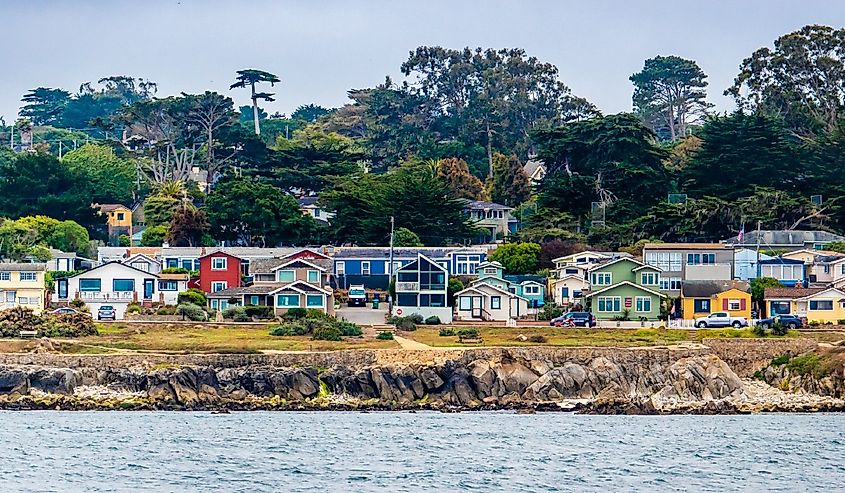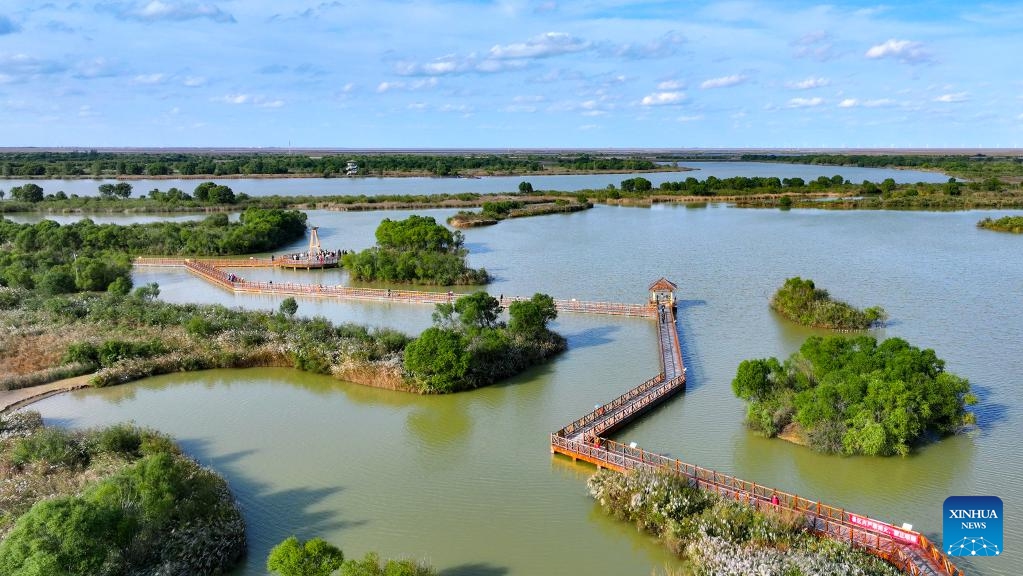The Great Barrier Reef, Collapsing? – CityWatch LA

Global Coral Reef Crisis 2025: A Failure to Uphold Sustainable Development Goals
Executive Summary
A convergence of recent scientific reports, including “The Great Barrier Reef Annual Summary Report of Coral Reef Conditions, 2024-2025” and data from the National Oceanic and Atmospheric Administration (NOAA), indicates an unprecedented global coral reef crisis. This report analyzes the crisis through the lens of the United Nations Sustainable Development Goals (SDGs), highlighting a critical failure to achieve SDG 14 (Life Below Water) and SDG 13 (Climate Action). The widespread coral bleaching, driven by record ocean heat, signals the crossing of a critical climate tipping point, with severe implications for marine biodiversity, coastal communities, and global climate stability.
Direct Impact on SDG 14: Life Below Water
The ongoing degradation of coral ecosystems represents a direct and catastrophic failure to meet the targets of SDG 14, particularly target 14.2, which calls for the sustainable management and protection of marine and coastal ecosystems.
Key Indicators of Ecosystem Collapse
- Fourth Global Bleaching Event: NOAA has confirmed the fourth and most extensive global coral bleaching event in history. From January 2023 to September 2025, bleaching-level heat stress has impacted 84.4% of the world’s coral reef areas.
- Geographic Scope: Mass coral bleaching has been documented in at least 83 countries and territories, demonstrating the global scale of the crisis.
- Great Barrier Reef Condition: The 2024-2025 report on the Great Barrier Reef describes its condition as the poorest ever recorded, signaling the vulnerability of even the world’s largest living structure.
- Ecological Tipping Point: The “Global Tipping Report 2025” concludes that even under a 1.5°C warming scenario, warm-water coral reefs are virtually certain to pass a point of no return, jeopardizing the marine biodiversity they support.
Root Cause: Inadequate Progress on SDG 13 (Climate Action)
The primary driver of the coral reef crisis is anthropogenic climate change, with insufficient global action failing to meet the core objectives of SDG 13.
Failure in Climate Mitigation
- Record Ocean Heat Absorption: The ocean has absorbed over 90% of the heat trapped by greenhouse gases. This has resulted in a record 500 continuous days of excessive ocean heatwaves from 2023 to 2025, pushing marine ecosystems beyond their tolerance limits.
- Rising Greenhouse Gas Emissions: Despite commitments made under the Paris Agreement in 2015, global CO2 emissions have increased by over 200% since 2000. The annual rate of increase has risen from 1.25 ppm in 2000 to 3.75 ppm in 2024.
- Insufficient National Contributions: A decade after the Paris Agreement, it is widely acknowledged that nations are not on track to meet their Nationally Determined Contributions (NDCs) to limit global warming.
Interlinked Crises Affecting Multiple SDGs
The climate crisis impacting coral reefs is interconnected with other environmental challenges, creating feedback loops that threaten additional SDGs.
Threats to SDG 15 (Life on Land) and SDG 11 (Sustainable Cities)
- Compounding Emissions: Critical carbon sinks, such as the Amazon rainforest and Arctic permafrost, are beginning to release stored carbon dioxide and methane. This natural release of greenhouse gases, in conjunction with human emissions, accelerates global warming and further endangers both marine (SDG 14) and terrestrial (SDG 15) ecosystems.
- Coastal Vulnerability: The same forces driving coral collapse—ocean warming and climate change—are contributing to rising sea levels, which pose a direct threat to coastal megacities and communities worldwide, undermining the goals of SDG 11.
Future Outlook and Proposed Interventions
The severity of the situation has prompted discussions of radical and high-risk interventions, as current mitigation strategies have proven inadequate.
Potential Scenarios and Solutions
- Natural Climate Variability: A potential La Niña event in the winter of 2025-2026 may offer temporary cooling in the Pacific, but it is not expected to alter the long-term trend of persistent ocean heatwaves.
- Solar Radiation Management (SRM): Geoengineering techniques to block solar radiation are being considered as a last-resort “panic button.” However, significant questions remain regarding its efficacy and potential unintended consequences, such as damage to the ozone layer.
Conclusion
The global coral bleaching event is a clear and alarming indicator of the world’s failure to take decisive climate action as mandated by SDG 13. This inaction has led to the near-collapse of vital marine ecosystems, directly undermining SDG 14. The crisis underscores the urgent need for a renewed commitment to global partnerships (SDG 17) to implement drastic emissions cuts and prevent the crossing of further irreversible climate tipping points.
Analysis of Sustainable Development Goals in the Article
1. Which SDGs are addressed or connected to the issues highlighted in the article?
-
SDG 14: Life Below Water
This is the most central SDG addressed. The article’s primary focus is the catastrophic mass bleaching of coral reefs, specifically the Great Barrier Reef, due to unprecedented ocean heatwaves. It describes the collapse of marine ecosystems, which directly relates to the conservation and sustainable use of oceans and marine resources.
-
SDG 13: Climate Action
The article explicitly identifies the root cause of the coral bleaching as climate change, driven by “Anthropogenic (human) generated greenhouse gas emissions.” It discusses rising CO2 levels, the failure to meet global climate targets set in the Paris 2015 agreement, and the overall issue of global overheating, making climate action a core theme.
-
SDG 15: Life on Land
While the main subject is marine life, the article connects the broader climate crisis to terrestrial ecosystems. It mentions that former carbon sinks, such as the “Amazon rainforest and Arctic permafrost,” are now emitting carbon dioxide and methane, contributing to the problem. This highlights the degradation of crucial land-based ecosystems.
-
SDG 17: Partnerships for the Goals
The article critiques the lack of effective global cooperation. It points out that despite the Paris 2015 climate conference, nations “are not even close to meeting” their commitments (Nationally Determined Contributions). This failure of international agreements and coordinated action directly relates to the challenges of achieving global partnerships for sustainable development.
2. What specific targets under those SDGs can be identified based on the article’s content?
-
Target 14.2: By 2020, sustainably manage and protect marine and coastal ecosystems to avoid significant adverse impacts, including by strengthening their resilience, and take action for their restoration in order to achieve healthy and productive oceans.
The article demonstrates a complete failure to meet this target. The description of the Great Barrier Reef’s condition as the “poorest condition ever” and the confirmation of mass bleaching in 83 countries show that marine ecosystems are not being protected from the adverse impacts of climate change.
-
Target 13.2: Integrate climate change measures into national policies, strategies and planning.
The article highlights a failure in this area by stating that 10 years after the Paris 2015 agreement, nations “are not even close to meeting Paris ’15 Nationally Determined Contributions (NDC) to stop global heat.” This indicates a lack of successful integration of climate measures into national policies.
-
Target 13.1: Strengthen resilience and adaptive capacity to climate-related hazards and natural disasters in all countries.
The collapse of coral reefs, described as the “most sensitive natural ecosystems on the planet,” is a climate-related natural disaster. The article implies that resilience is critically low, as even under the most optimistic 1.5°C warming scenario, “all warm-water coral reefs are virtually certain to pass a point of no return.”
-
Target 15.3: By 2030, combat desertification, restore degraded land and soil… and strive to achieve a land degradation-neutral world.
The article’s mention of the Amazon rainforest and Arctic permafrost turning from carbon sinks into carbon sources is a clear indicator of severe land degradation, working directly against this target.
-
Target 17.14: Enhance policy coherence for sustainable development.
The article’s criticism of global leadership—holding “huge world conferences to talk about troubles… but no major coordinated solutions ever play out”—points directly to a lack of policy coherence and effective action on a global scale to address the climate crisis.
3. Are there any indicators mentioned or implied in the article that can be used to measure progress towards the identified targets?
-
Indicators for SDG 14 (Life Below Water):
- Proportion of coral reefs affected by bleaching: The article states that “bleaching-level heat stress has impacted 84.4% of the world’s coral reef area.”
- Geographic spread of bleaching events: It is mentioned that “mass coral bleaching has been documented in at least 83 countries and territories.”
- Ocean temperature anomalies: The article cites “extremely high levels of heat stress (+3 to 4°C) off the Kimberley coast” and “500 days of continuous excessive heatwaves” as direct measures of the stress on marine ecosystems.
-
Indicators for SDG 13 (Climate Action):
- Concentration of greenhouse gases: The article provides a specific indicator of failure, noting that the annual rate of CO2 increase has soared “from an annual rate of 1.25 ppm in 2000 to a soaring 3.75 ppm in 2024.”
- Change in total greenhouse gas emissions: It states that “CO2 emissions are up more than 200% since 2000.”
- Progress towards Nationally Determined Contributions (NDCs): The article implies a qualitative indicator by stating nations are “not even close to meeting Paris ’15 Nationally Determined Contributions.”
-
Indicators for SDG 15 (Life on Land):
- Change in ecosystem carbon balance: The article implies a critical indicator by describing how “former carbon sinks like the Amazon rainforest and Arctic permafrost” are now “spewing emissions into the atmosphere.” This shift from a net sink to a net source is a measurable sign of ecosystem degradation.
4. Table of SDGs, Targets, and Indicators
| SDGs | Targets | Indicators |
|---|---|---|
| SDG 14: Life Below Water | 14.2: Sustainably manage and protect marine and coastal ecosystems to avoid significant adverse impacts. |
|
| SDG 13: Climate Action | 13.2: Integrate climate change measures into national policies, strategies and planning. |
|
| SDG 15: Life on Land | 15.3: Combat desertification, restore degraded land and soil. |
|
| SDG 17: Partnerships for the Goals | 17.14: Enhance policy coherence for sustainable development. |
|
Source: citywatchla.com
What is Your Reaction?
 Like
0
Like
0
 Dislike
0
Dislike
0
 Love
0
Love
0
 Funny
0
Funny
0
 Angry
0
Angry
0
 Sad
0
Sad
0
 Wow
0
Wow
0
















































:focal(1500,1000)/https://media.globalcitizen.org/a6/9a/a69a4720-d8a1-4715-b596-18738d03c05c/rotary_polio_hero_image.jpg?#)







/countries/sri-lanka/photo-credit---dmc-sri-lanka.tmb-1200v.jpg?sfvrsn=dc298bcc_1#)

















